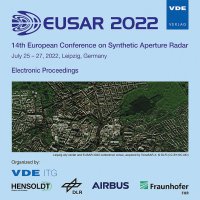Impact of Highly Varying Incidence Angle on the Feature Space of PolSAR Images
Konferenz: EUSAR 2022 - 14th European Conference on Synthetic Aperture Radar
25.07.2022 - 27.07.2022 in Leipzig, Germany
Tagungsband: EUSAR 2022
Seiten: 6Sprache: EnglischTyp: PDF
Autoren:
Schmitz, Sylvia; Thiele, Antje (Institute of Photogrammetry and Remote Sensing, Karlsruhe Institute of Technology (KIT), Germany & Fraunhofer IOSB, Ettlingen, Fraunhofer Institute of Optronics, System Technologies and Image Exploitation IOSB, Germany)
Hammer, Horst (Fraunhofer IOSB, Ettlingen, Fraunhofer Institute of Optronics, System Technologies and Image Exploitation IOSB, Germany)
Hinz, Stefan (Institute of Photogrammetry and Remote Sensing, Karlsruhe Institute of Technology (KIT), Germany)
Inhalt:
The high variation of the incidence angle in airborne SAR data poses challenges for the development of classification, clustering or parameter retrieval approaches, due to its influence on the measurable radar response. This paper presents an analysis of the influence of varying incidence angle on features derived from fully polarimetric airborne SAR data. The considered features include backscattering coefficients in each polarization and features derived from model-based and eigenvalue decomposition, whose behavior is investigated with respect to dominant scattering mechanisms and land cover class. The analysis reveals that the impact of the incidence angle on the radar response differs between features and the type of observed scatterers. Comparing surface, double-bounce and volume scattering, it is demonstrated that radar responses dominated by surface scattering are most affected. To visualize the influence of the incidence angle on the entire feature set, the dimensionality reduction method Uniform Manifold Approximation and Projection (UMAP) is applied. The representation in the reduced feature space allows capturing in which way the appearance as well as the separability of different land cover classes change with varying incidence angle.


